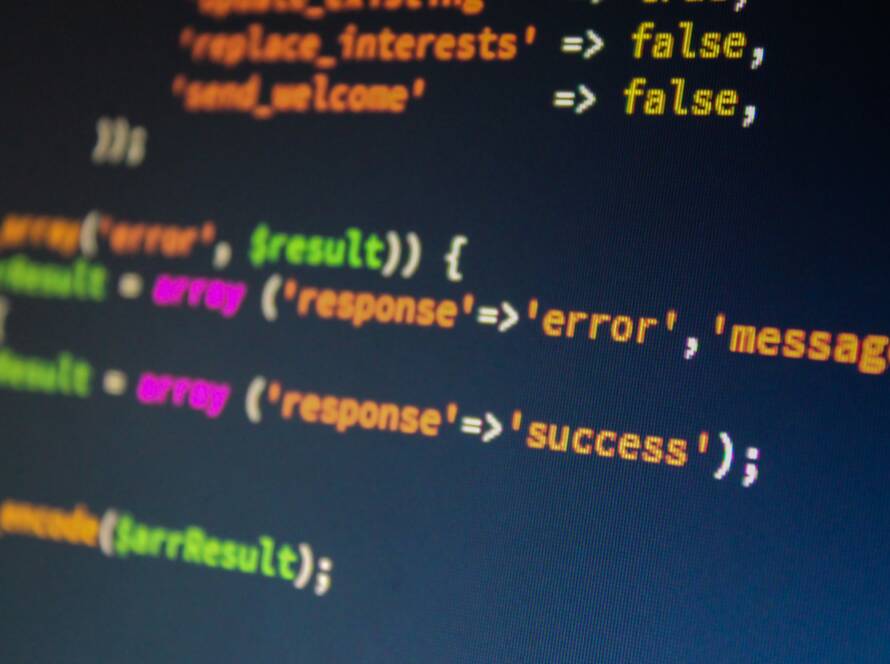Published by Contentify AI
- Introduction
- Understanding PHP Debugging
- Essential Tools for PHP Debugging
- Common PHP Debugging Techniques
- Best Practices for Troubleshooting PHP Code
Introduction
Debugging and troubleshooting are critical skills for any developer, particularly when working with a language as widely used as PHP. Mastering these skills ensures that you can efficiently resolve issues, optimize performance, and maintain the quality of your applications. This guide is designed to equip you with the knowledge and tools needed to debug and troubleshoot PHP code like a pro. From understanding the basics of PHP debugging to employing advanced techniques and best practices, we’ll cover everything you need to navigate the complexities of PHP code with confidence. Whether you’re a novice seeking to enhance your debugging skills or an experienced developer looking to refine your troubleshooting methodology, this guide offers valuable insights and practical advice to improve your proficiency in handling PHP code.
Understanding PHP Debugging
Understanding the art of debugging and troubleshooting PHP code requires a foundation in the fundamentals of how PHP code executes and where common issues arise. Debugging is the process of identifying, isolating, and fixing problems within code, while troubleshooting is a broader term that encompasses identifying the problem in the first place. To debug and troubleshoot PHP code effectively, you must develop a systematic approach to identifying errors and performance bottlenecks.
The first step in this process is to become familiar with the types of errors PHP can generate. These include syntax errors, warnings, notices, and fatal errors. Syntax errors are common and usually the result of a typo or missing element, such as a semicolon or bracket. Warnings and notices, while not halting the execution of the script, indicate bad practices that could lead to problems. Fatal errors, on the other hand, stop script execution and must be resolved for the application to run.
Understanding PHP’s error reporting is crucial. Configuring your development environment to display all relevant errors can significantly aid in the debugging process. This involves setting the `error_reporting` directive to `E_ALL` in your `php.ini` file or using the `error_reporting()` function within your scripts. Additionally, enabling display errors in a development environment gives immediate feedback, though it should be disabled in a production environment for security reasons.
The use of `var_dump()` and `print_r()` functions can provide insights into the contents of variables and arrays at any point in your code, helping identify where values may not be what you expect. For more complex issues, understanding control flow and being able to trace the execution path of your script is vital. This may involve stepping through code execution line by line, either mentally or using a debugger tool, to understand how data is being manipulated and where logic may be deviating from expectations.
To debug and troubleshoot PHP code like a pro, it’s essential to cultivate patience and a methodical approach to problem-solving. Break down complex problems into smaller, more manageable pieces and tackle each one systematically. Keep an organized record of the steps taken and results observed during the debugging process, as this can help identify patterns and lead to solutions more quickly.
In summary, mastering PHP debugging and troubleshooting involves a deep understanding of PHP error types, effective configuration of error reporting, and the strategic use of debugging functions and techniques. By honing these skills, you will be well-equipped to identify, diagnose, and resolve issues in your PHP code, enhancing the quality and reliability
Essential Tools for PHP Debugging
When embarking on the journey of debugging and troubleshooting PHP code, having the right arsenal of tools at your disposal is paramount. These tools not only make the process more efficient but also reveal insights into your code that might otherwise remain obscured. Here’s a rundown of essential tools that can elevate your PHP debugging game.
**Xdebug:** This is arguably the most powerful debugger for PHP out there. Xdebug integrates seamlessly with numerous IDEs and provides a wealth of features including stack traces, profiling information, and memory allocation statistics. It allows you to step through your code line by line, inspect variables, and execute PHP code in real-time. Configuring Xdebug with your development environment can significantly reduce the time it takes to find and fix bugs.
**PHP Error Log:** Utilizing the PHP error log is a fundamental practice. It records all errors and warnings that occur during the execution of your PHP scripts. Ensure logging is enabled in your `php.ini` file and regularly monitor the logs for any issues. This can often be the quickest way to diagnose problems, especially on production servers where displaying errors directly is not advisable.
**PHPUnit:** This is a cornerstone tool for any developer striving to debug and troubleshoot PHP code efficiently. PHPUnit is a unit testing framework that allows you to write and run tests for your PHP code. By writing tests, you can ensure your code behaves as expected, and when it doesn’t, PHPUnit helps pinpoint the source of the problem. Adopting a test-driven development (TDD) approach can significantly reduce debugging time by catching errors early in the development cycle.
**Var_dump() and print_r():** While not sophisticated tools, these PHP functions are incredibly useful for quickly inspecting variable contents at runtime. They can be inserted into your code at strategic points to output the value of variables, arrays, or objects, aiding in the identification of where things may be going awry. However, these should be used sparingly and removed from the code once the issue is resolved to avoid clutter and potential performance impacts.
**Browser Developer Tools:** While not specific to PHP, browser developer tools (available in Chrome, Firefox, etc.) are invaluable for debugging the output of your PHP code, especially when it comes to HTML, CSS, and JavaScript interactions. The network tab can help you understand the requests being made by your PHP application and the responses received, which is crucial for troubleshooting issues related to APIs, AJAX requests, or form submissions.
**IDE Integration:** Modern Integrated Development Environments (
Common PHP Debugging Techniques
Mastering common PHP debugging techniques is critical for any developer looking to enhance their ability to quickly and efficiently identify and resolve issues in their code. The process of how to debug and troubleshoot PHP code like a pro involves a combination of strategic thinking, a deep understanding of PHP internals, and the effective use of debugging tools. Here, we delve into some of the most effective techniques that can be employed to debug PHP applications.
**1. Error Reproduction:** The first step in debugging is to reliably reproduce the error. This means setting up the same conditions under which the error occurs, making it easier to trace and resolve. Whether it’s a specific set of inputs or a particular state of the application, being able to consistently replicate the problem is key.
**2. Reading and Understanding Error Messages:** PHP provides error messages that, while sometimes cryptic, offer valuable clues about what went wrong. Learning to decipher these messages can pinpoint the exact location and nature of an error, saving a lot of guesswork and time.
**3. Utilize `var_dump()` and `print_r()`:** These functions are indispensable for dumping the contents of a variable, array, or object to the screen. Seeing the actual data your code is working with at different execution points can reveal misalignments between expected and actual data structures.
**4. Enable Xdebug:** Xdebug is a powerful debugging and profiling tool for PHP that can drastically improve the efficiency of your debugging process. It allows for step debugging, meaning you can execute your code step-by-step, inspecting variables and application state at each point. This can illuminate the root cause of bugs in a way static analysis or manual testing cannot.
**5. Use PHP Error Logs:** Sometimes errors occur under conditions that aren’t easily replicated in a development environment—especially in production. In such cases, PHP error logs can be a treasure trove of information, capturing warnings, errors, and critical issues that occurred during execution.
**6. Implement Unit Testing:** While technically a preemptive technique, writing tests for your PHP code using frameworks like PHPUnit can help catch bugs early in the development cycle. Unit tests can also serve as a form of documentation, clearly outlining expected behavior and thus making the debugging process smoother when things go awry.
**7. Employ Conditional Debugging:** This involves using `if` statements to execute debugging code only when certain conditions are met. For example, you might output debugging information only for a specific user or under specific application states.
Best Practices for Troubleshooting PHP Code
In the realm of PHP development, encountering bugs and issues is par for the course. However, adopting a few best practices can significantly elevate your ability to debug and troubleshoot PHP code effectively. These guidelines not only streamline the debugging process but also help prevent future errors, ensuring your code remains robust and reliable.
Firstly, cultivate a habit of writing clean, readable, and well-documented code. This foundational step makes it easier to understand the flow of your application and pinpoint where things might go wrong. Using meaningful variable names, commenting liberally, and adhering to PHP coding standards are simple yet effective strategies.
Embracing a version control system like Git is another critical practice. It allows you to track changes, revert to previous versions of your code, and isolate the introduction of bugs. By committing changes in small increments, you can more easily identify the specific code alteration that caused an issue.
Implementing comprehensive logging can be a game-changer in how you approach debugging and troubleshooting. Log files can provide clues to an application’s behavior over time, recording errors and anomalous events that occur during execution. Configuring your PHP environment to log errors, warnings, and notices is a proactive step towards early detection of potential issues.
Understanding and leveraging the power of PHP’s built-in functions for error handling is essential. Functions such as `error_reporting()`, `set_error_handler()`, and `trigger_error()` can be used to customize how your application responds to different levels of errors, offering greater control over the debugging process.
Incorporating automated testing into your development workflow is another best practice that cannot be overstated. Tools like PHPUnit for unit testing and Behat for behavior-driven development can help identify issues early, often before the code is pushed to a live environment. Automated tests act as a safety net, catching regressions and ensuring new features don’t break existing functionality.
Regularly reviewing and refactoring your code is also crucial. Over time, codebases can become complex and unwieldy, making bugs more difficult to diagnose and fix. By periodically reviewing your code, you can refactor problematic sections, improve performance, and enhance readability, which, in turn, facilitates easier debugging.
Collaboration and knowledge sharing with peers play a vital role in troubleshooting complex issues. Sometimes, a fresh pair of eyes can quickly identify a solution that might have eluded you. Utilize code reviews, pair programming sessions, and discussions to leverage collective expertise and experiences.
Finally, embracing a mindset of continuous learning and



